Step 1: Enable Remote Desktop on your computer
Right-click 'My Computer' and then click 'Properties'. Click the 'Remote' tab and then choose 'Allow remote connections to this computer'. Then click the 'OK' button.
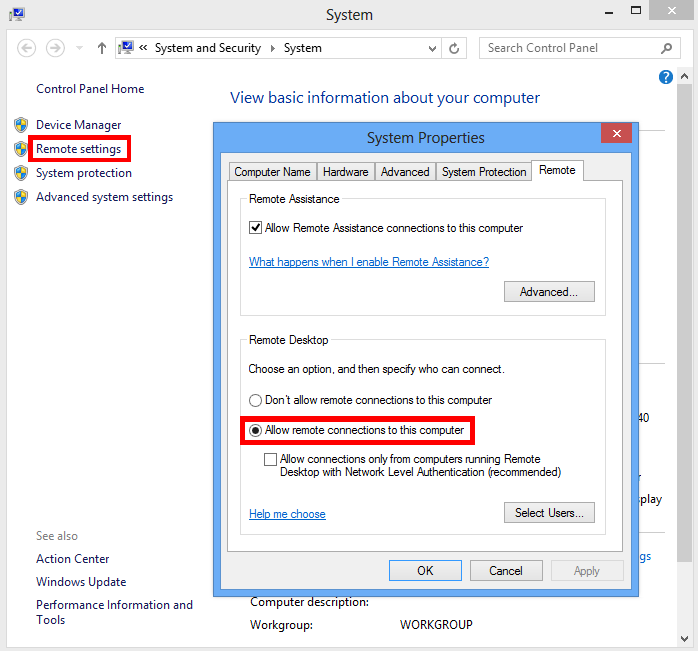
Step 2: Open Remote Desktop port (port 3389) in Windows firewall
Go into the control panel in your computer and then into 'System and security' and then into 'Windows Firewall'. Click 'Advanced settings' on the left side. Ensure that 'Inbound Rules' for Remote Desktop is 'Enabled'. Please note that if you are using a firewall other than Windows Firewall on your computer, you must open port 3389 in the firewall.
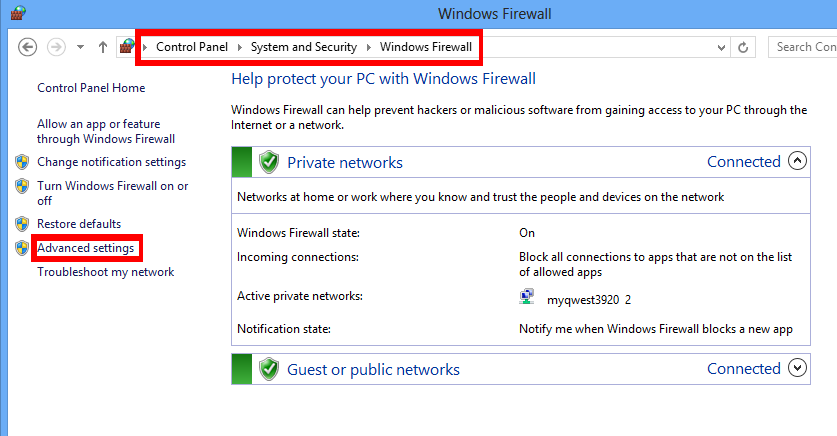
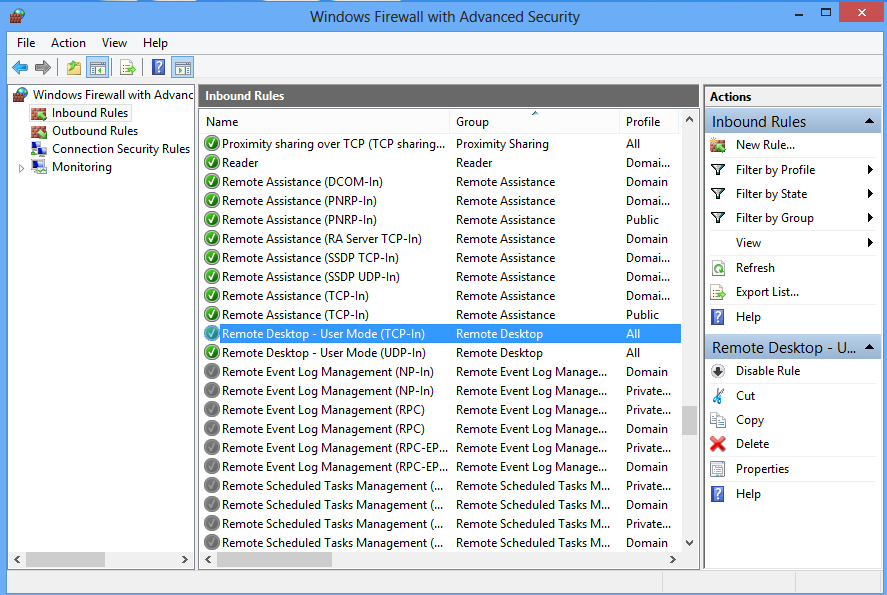
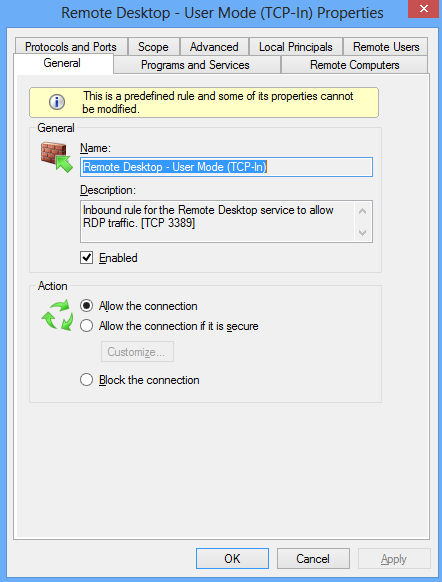
Step 3: Set up Port Forwarding (Port Translation) in the router
Please log into the router website (generally at http://192.168.1.1 or http://192.168.0.1) and go into the 'Port Forwarding' section. Add a new 'Port Forwarding' rule for TCP port 3389 to be forwarded to the internal IP of your computer. To get the internal IP address of the device, you may type ipconfig in "cmd.exe". It is usually in the form of "192.168.1.**".
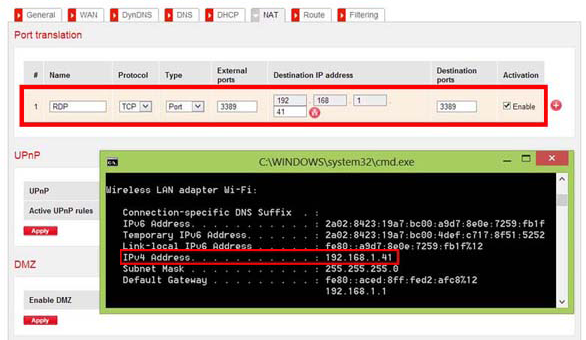
NOTE: If you need to connect to several machines behind the same router, you should set up port forwarding for all these machines. Let's suppose machine 1 has an internal IP 192.168.1.41, machine 2 has an internal IP 192.168.1.42, and machine 3 has an internal IP 192.168.1.43. We can setup different external ports for different machines as shown in the picture below.
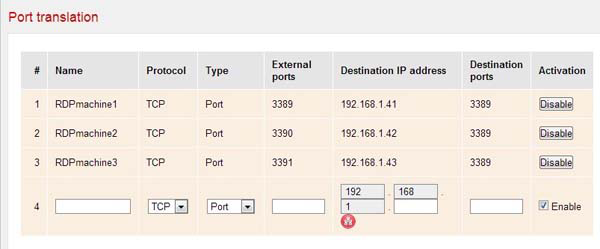
To see if the port forwarding has been setup correctly, you can use our Port Check network tool to see if the corresponding port is open. If you get a "Success" response from the port check, then your network has been correctly set up.
STEP 4: Map your dynamic IP to a hostname
Internet service providers change your IP address on a regular basis, but with dynamic DNS you can keep your domain pointing at the current IP of your home server or other devices.
You may register a domain name of your own (yourdomain.com) and sign up for Dynu Dynamic DNS Service for it or use a free Dynu domain name (yourdomain.dynu.com). You may refer to this Getting started tutorial for more information.
STEP 5: Use Dynu DDNS service to access your computer remotely
Download the appropriate client software and run it in the computer to keep the hostname mapped to your dynamic IP. You may also set up the DDNS service in your router if your router supports it.
You should now be able to access your computer using yourhostname.dynu.com from the internet via Remote Desktop using any compatible Remote Desktop client and your domain name.
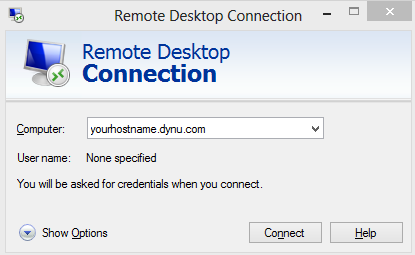
NOTE: In the case of connecting several machines, for machine 1, you can use "yourhostname.dynu.com:3389", for machine 2, you may use "yourhostname.dynu.com:3390", and for machine 3, you may use "yourhostname.dynu.com:3391".
This comment has been removed by the author.
ReplyDeleteHelo bro if you want to get blog post views contact me .
ReplyDelete1000views price is 3$ i can send you unlimited views .
Demo available . Contact details: croma8346@gmail.com .
Mail me hurry up